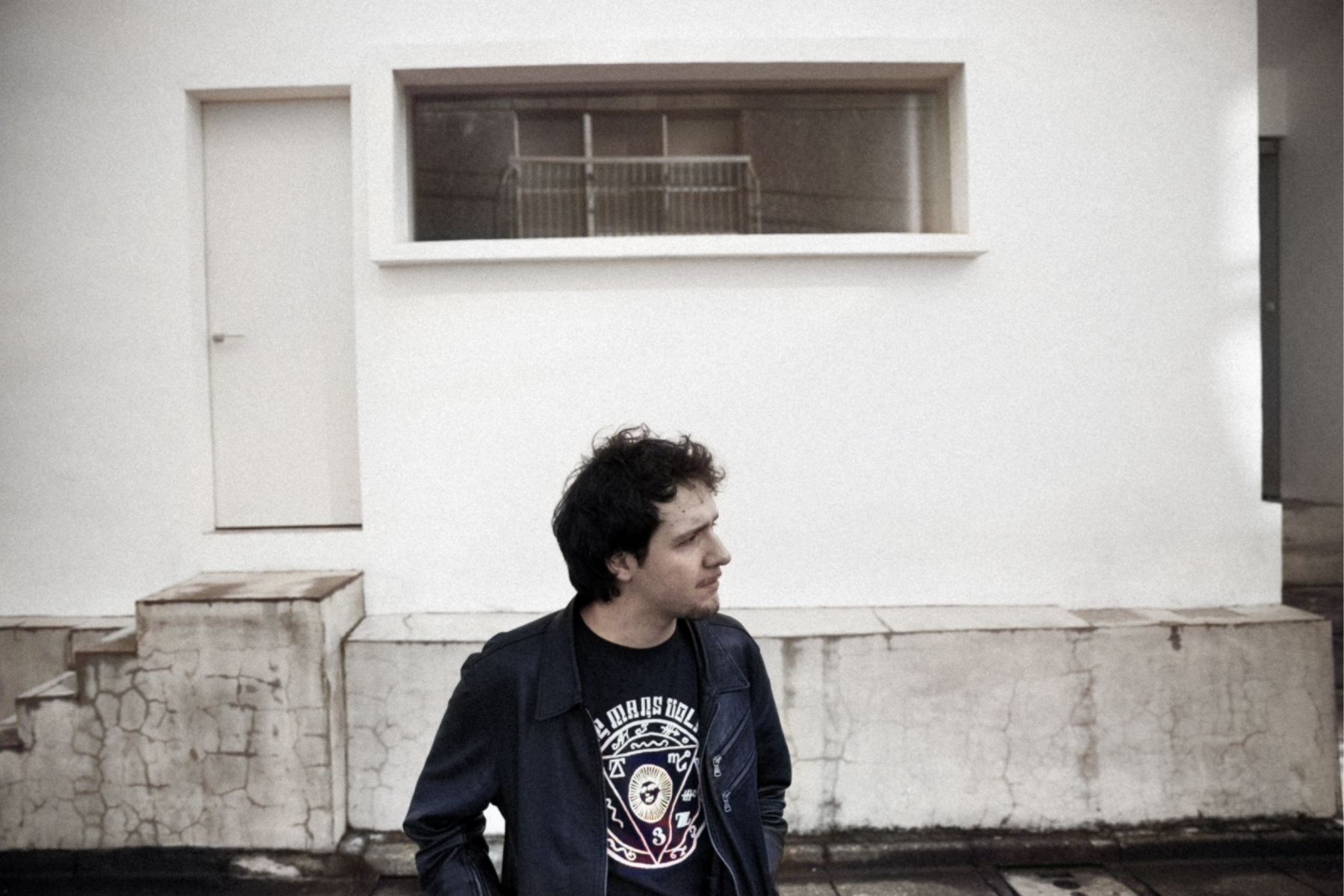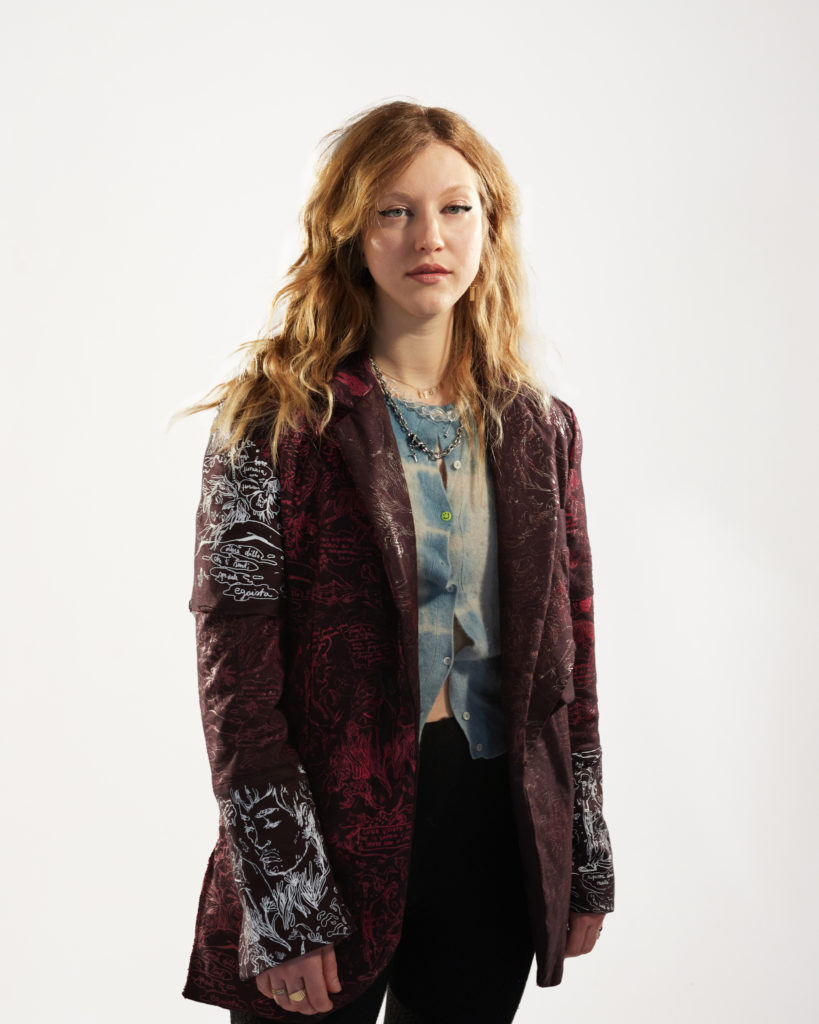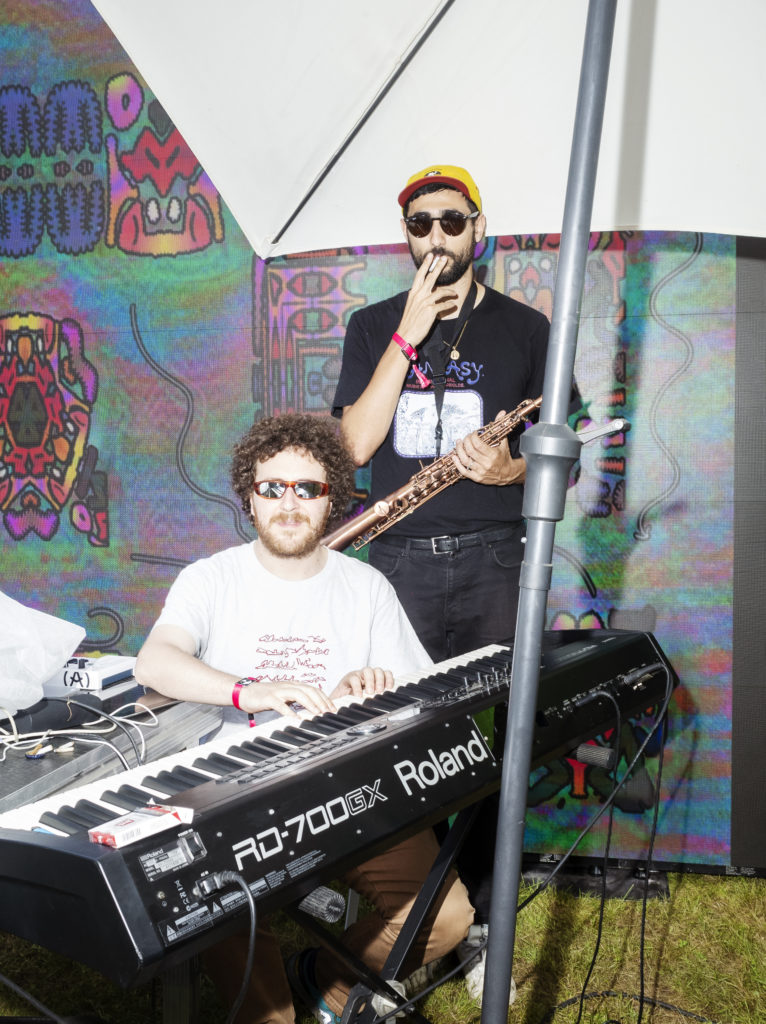
Stefania Vulpi – RBL: Good morning everyone and good afternoon, we are live from the Imbarchino del Valentino, Turin. It’s 6 PM and I’m Stefania vulpi from RBL. I’m with you today for a special live broadcast organized in collaboration with Nextones, a music and performing arts festival held every year in the Ossola Valley that this year will take place July 20-23. RBL is a media partner of Nextones and the two meet and will meet on festival days. Today we inaugurate this new collaboration with a special interview with three Italian artists who have collaborated with Nextones: Matteo Pennesi and Luigi Monteanni, founders of the independent label Artetetra and the artistic duo Babau. With us also Alberto ricca, aka Bienoise, composer, and sound designer originally from Verbania, therefore from the areas where the Festival will be held. Finally, Flora Rabitti will join shortly. Hello Matteo, Luigi and Alberto.
Babau: Hello Stefania, thank you.
Stefania: So Luigi is with us in virtual form. He is on the other side of the planet, in Indonesia. We’ll have a chance then to maybe ask him two questions about these trips to Southeast Asia. Matteo and Alberto Hello, welcome, and thank you for joining us. Let’s tell our audience a little bit about your work, your artistic practice, your musical research, and the residency that took place as part of Nextones 2022, in which you collaborated. In short, what is Babau? Where does it come from?
Matteo – Babau: The project was born because Luigi and I have been playing for several years, we’ve known each other basically since high school. Babau actually became a project in 2014, and next year we will be 10 years old. It is a multifaceted project, which has changed as we have changed over the years. We didn’t have a specific idea at the beginning. We wanted to make music inspired by 1950s postwar exotica reworked in a key that went hand in hand with the somewhat dark Italian psychedelia of those years. The first EP, “Papalagi” was inspired by this music. Then we moved around a bit and narrowed down the set for logistical reasons, switched to computers, and so the love for computer music and manipulations started. We released “Stock Fantasy Zone,” a record inspired by video game music. For the past 4 and 5 years we have been mainly involved in live improvisation with electronics. For the residency we had the opportunity to collaborate with Alberto and work on tracks that develop differently than the things we have been doing lately. We are very satisfied.
Luigi – Babau: It is a set that is very much influenced by our own movements. If at the beginning we played together but made music that we wanted to be post-geographical, to this day we play from different countries or with instruments brought from places we’ve been. In my opinion you can hear it in the way we play, now more loose and abstract.
Stefania: Alberto would you like to tell us about yourself and your research as Bienoise?
Bienoise: Bienoise is also around the same age as Babau, maybe slightly older. This project is a non-project, literally it’s me doing what I feel like. Lately I have accepted my passion for everything in the background. You guys at RBL know this well because you hosted a set of mine on August 15, which can be heard on the secret garden playlist on RBL’s SoundCloud. It was one of the DJ sets I did. I’m really interested in stimulating listening and giving dignity to things that don’t usually get attention, like background noise, field recordings, glitch, which is what I’ve been working on in collaboration with Matteo and Luigi, who I’ve known for a long time. With them I tried to go into the gaps of their musical practice, which I consider exemplary and exhaustive.
Stefania: Very clear, thank you Alberto. Flora do you feel like telling us about yourself?
Flora: I met Babau long before my brand started and we fell in love stylistically because we both represent grotesque imaginary worlds in different ways. They asked me to participate in two of their residencies, one at Nextones and one at Casa degli Artisti, with the cloths I produce from circular fabrics. The brand is called Florania, we are a ready-to-wear brand starting from the street and paying attention to circularity and waste materials. For Nextones, we created a spider web of animals floating behind the guys that created a somewhat post-apocalyptic, Donna Haraway-esque imagery.
Stefania: Your contribution amplifies the scope of a project that began primarily as sound research. Of course the moment it takes place in a physical space it also expands in terms of installation.
Florania: and that’s just the beginning! Matteo and Luigi have this illustrative ability that is evident in the pieces, a storytelling that is reflected in their choices and the artists they involve.
Stefania: After an introduction about your projects I’d like to start with two words, “improvisation” and “imagination”, both fundamental in Babau’s musical research. How do these two concepts meet and how do they relate to your artist practice and the project looongplay in particular?
Matteo – Babau: We always had a great fascination for improvisation. When we make music we like to start or arrive at an idea, connecting music to our imagination.
Luigi – Babau: we are musicians and we are mainly interested in music. What we like most and what looongplay is part of is the possibility of generating imaginaries that are often inconsistent but dense with things, multimedia and mad even if only as an excuse to explore all our interests between drawings, texts and installations. Improvisation is the ability to put together a set of sounds out of nothing that will never come up again, and it applies to all these imaginaries as well. They are collages of things that make no sense but communicate a density of sensations and images, a collection of films, media and absurd things.
Matteo – Babau: We enjoy exploring the idea of interplay between musicians, which is a complex but nuanced concept, quite profound in terms of music making and improvisation.
Stefania: Alberto I’m curious to know what you think about it.
Bienoise: Improvisation is very important to me. I am a control freak and this brought me to love electronic composition and improvisation at the same time. In improvisation I have freedom. I really love the way improvisation unfolds as instant composition. It was great to work on these pieces, both in residence, when we improvised for a very long time (more than 20 hours in total). I really like Babau’s approach to choosing instruments and devices, technologically humble material that leads to a precise result.

Stefania: I am also curious about Flora’s experience. What kind of interplay was created between different disciplines: music, visual and material research?
Flora: I tried to build characters who were more mediums than protagonists. Not a theatrical performance but something that could stand behind the console. They wore my clothes and I used materials taken from a residency I did in Tanzania. They made them come to life. Their shadows were projected onto the ground and onto the spectators. I gradually connected these animals to each other to create this web. Babau took on this role as characters. The ensemble created a bit of a theatrical performance. I did another residency but it had never been so immersive for me, usually I give the garments or drapes, in this case I was teleported into their reality and listened to looongplay throughout. I hope to work with them again and celebrate this artistic marriage.
Stefania: I also take this opportunity to mention that looongplay will be performed live at Terraforma on June 11. Alberto would you like to tell us how Carl Stone is so influential for your work?
Bienoise: He is particularly influential for looongplay because the fragment we heard is made with the same technique as looongplay, hacking the available hardware, a sampler from the 1980s, to perform what he calls “real-time sound compression and extension.” The goal was to invent a system not to statically reproduce a recording but to cyclically extend its boundaries.
I have been working on an algorithm that does this in real time. Given a 20-minute improvisation, in several hours it starts from the first millisecond and gets to playing the full 20 minutes in much more time. Realizing this threw me into a kind of sonic inception.
Stefania: Many people think that improvisation means “playing randomly.” There are actually guidelines in improvisation as well. Is there an element of randomness in the way you collaborate? For example in my graphic design practice I think that randomness leads me to do things that I couldn’t do by reasoning.

Flora: As far as I’m concerned there was definitely randomness because I didn’t know what kind of material I was going to have at my disposal during the residency. Maybe it was 70 percent improvisation during the residency. In my work when it comes to creative direction and illustration, improvisation is important. Leading an office of ten people I can’t just improvise, but in my own practice and research this condition of mental slime is important and it finds a meeting point with Babau being permeated by reality. It’s all about rhythm, and the way they perform and collaborate with others is based on rhythm.
Matteo: There is definitely an element of randomness because of the instruments we use, for example I use a software that arranges the samples randomly. It is also important to know how many degrees of freedom you are giving yourself. Controlled chaos is the soul of improvisation.
Bienoise: I agree about controlled chaos, and I think the crucial thing in improvisation is listening. I can’t talk about “playing randomly” but accepting any unexpected suggestions that come from external stimuli, such as the audience or the environment we are in. I agree with composer Helmut Lachenmann who says
that “composing is creating an instrument, so creating an instrument is also composing.
Luigi – Babau: As far as I am concerned, randomness is part of how we play instruments or techniques starting from what we already know. There’s a selection of sounds and instruments, body techniques and listening techniques that we are familiar with. It is impossible to predict or reproduce what we will play. What we can control is listening to ourselves and to each other, trying to manage the reactions that your intervention will provoke. I like Chris Corsano’s idea that improvising is allowing the other person to be the best musical version of themselves. The idea of looongplay was to think of improvisation as an environment that you discover and move through.